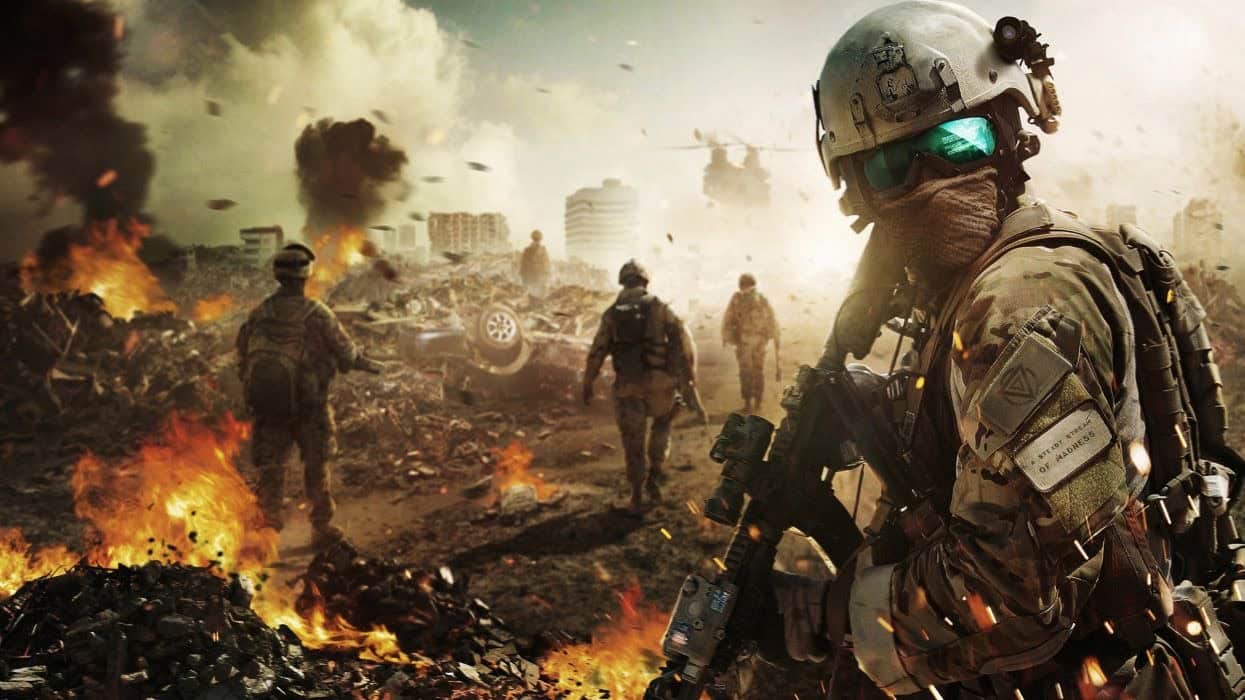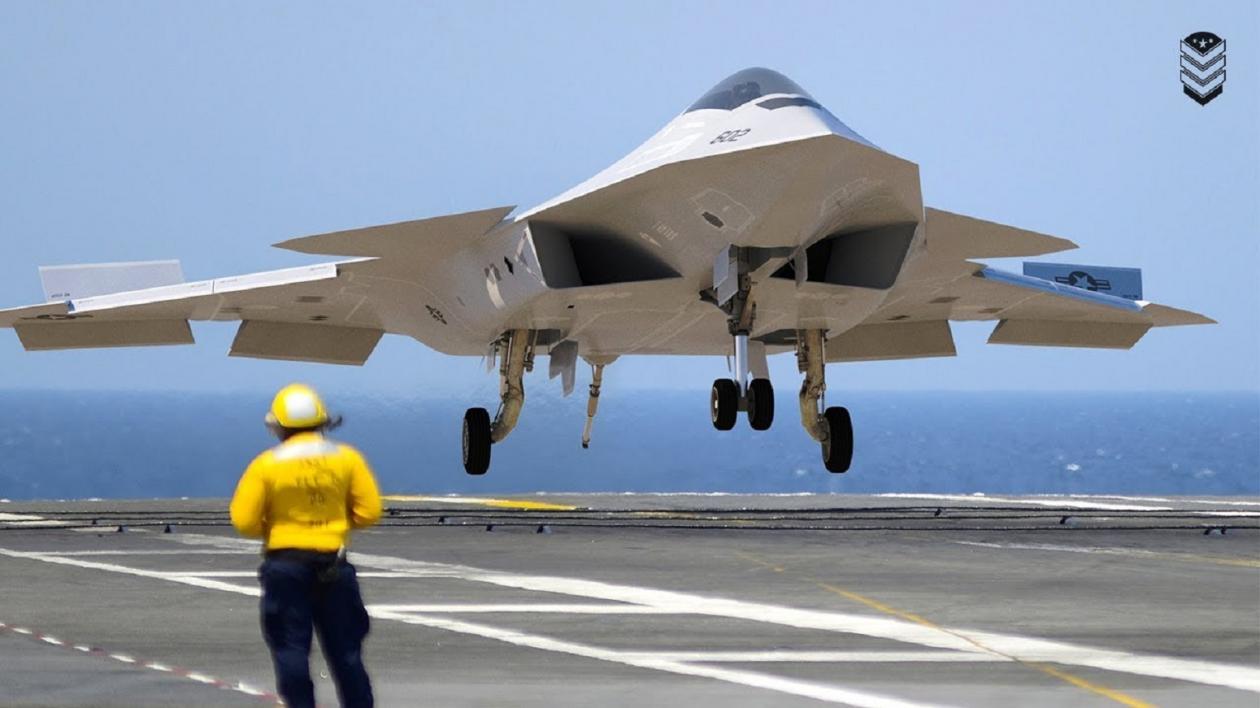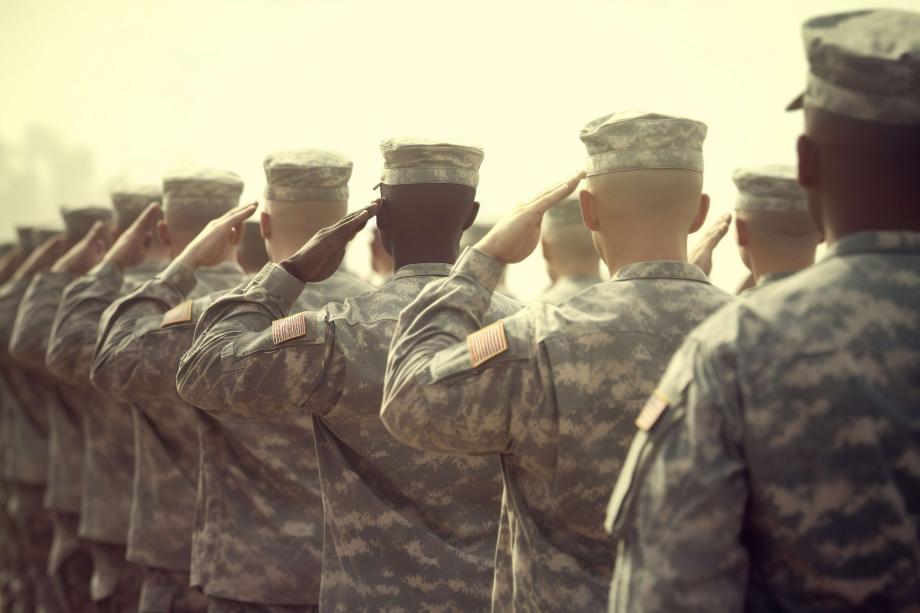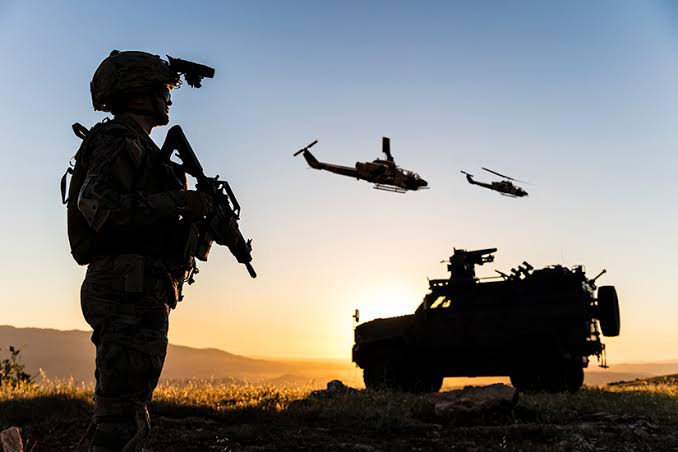With China Engaging In Largest Military Buildup Since WW II And Russia To Hike Defence Spending Almost 70%; Global Defence Spending Surges to Record High, Signalling Heightened Tensions And Possibility Of Conflict?
The world is currently witnessing an alarming surge in military expenditures, marking an unprecedented peak in global defence spending. This surge, which amounts to a massive $2,240 billion, reflects a 3.7 per cent increase in real terms. China is said to be engaging in the largest military buildup since WW II, and Russia is set to hike its defence budget by almost 70; other countries, too, are following suit. What does this escalation in military budgets signify, and what are the key factors driving this surge, the major players behind it, and the implications it carries for international security?

China, Russia, and United States Up Their Defence Spending
A senior Australian diplomat has asserted that China is currently engaged in its most substantial conventional military expansion since World War II without offering any clear explanation for its strategic intentions; the development has transpired amid Australia’s efforts to mend its relations with China following a challenging period of tension.
In his statement, Philip Green, the Australian High Commissioner to India, stated the unprecedented scale of China’s military buildup, emphasising the absence of a disclosed strategic purpose or diplomatic reassurance by China.
Australia and China relations have been rocky, and despite Australia’s commitment to fostering constructive engagement with China and stabilizing their relationship, specifics about the nature and scope of this military buildup remain elusive.
Notably, China finds itself embroiled in territorial disputes with nearly all of its neighboring countries, spanning maritime and land borders, particularly in the South China Sea—a region of particular interest to Australia.
Philip Green delivered these remarks during the ‘Kolkata Dialogue – Australia and India: Working Together to Build Island State Resilience,’ an event organized by the Australia India Institute in collaboration with India’s Observer Research Foundation.
At the ‘Kolkata Dialogue,’ Australian and Indian experts discussed various topics like enhancing climate resilience in Indo-Pacific island nations and countering economic coercion and disinformation within the region; the dialogue coincided with the commencement of the 13th Indo-Pacific Army Chiefs’ Conference in New Delhi.
Significantly, after a three-year hiatus, Australia and China recently resumed high-level dialogues; nonetheless, he cautioned that the international community must acknowledge the realities of military buildup and its potential to disrupt stability.

The Important Indo-Pacific Region
China asserts broad territorial claims in the vast biogeographic region encompassing the Indian Ocean, the western and central Pacific Ocean, and the South China Sea, contested by Taiwan, the Philippines, Brunei, Malaysia, and Vietnam, amid reports of artificial island construction and military installations.
Russia
Meanwhile, a finance ministry document revealed that Russia is poised to substantially increase its defence expenditure in 2024 by almost 70 per cent.
Moscow’s heightened military spending is primarily geared toward supporting its extensive operations in Ukraine, which have intensified over the past year; despite persistently high inflation and a weakened ruble, Russian expansion in defence spending has persisted.
The document specifies that defence expenditure is projected to surge by more than 68 per cent compared to the previous year, reaching nearly 10.8 trillion rubles (approximately $111.15 billion), constituting roughly 6 per cent of GDP—this allocation surpasses that designated for social policy initiatives.
In fact, the defence allocation is estimated to be roughly three times higher than the combined spending on education, environmental protection, and healthcare for the year 2024, as per calculations by AFP.
The finance ministry’s document indicates a shift in Russia’s economic policy focus from crisis management to advancing national development objectives.
This realignment includes bolstering defence capabilities and incorporating the four Ukrainian regions Moscow claims to have annexed last year—Lugansk, Donetsk, Kherson, and Zaporizhzhia.
This escalation in defence expenditure also coincides with warnings from Russia’s central bank regarding a slowdown in economic growth in the latter half of 2023 and persistent inflation above the bank’s target of four per cent.
However, despite these economic challenges and Western sanctions, Russian President Vladimir Putin and other officials have largely downplayed the economic consequences of the Ukraine offensive and assert that Russia has successfully navigated the storm of sanctions.

Global Military Spending
World military expenditures have surged to a new all-time high, reaching $2,240 billion in 2022-23, reflecting a real-term increase of 3.7 per cent.
Dr. Nan Tian, a Senior Researcher with SIPRI’s Military Expenditure and Arms Production Programme, noted, “The continuous rise in global military expenditure in recent years is a sign that we are living in an increasingly insecure world. States are bolstering military strength in response to a deteriorating security environment, which they do not foresee improving in the near future.”
The upswing is primarily attributed to heightened spending in Europe, mainly driven by Russia and Ukraine, thus shaping the global military landscape and escalating tensions in East Asia, which have led many nations to reevaluate their defence budgets.

Europe Caught In The Ongoing Conflict
In Central and Western Europe, military spending reached $345 billion in 2022, surpassing levels not seen since the end of the Cold War in 1989, thus representing a 30 per cent increase compared to 2013.
With several nations committing to multi-year plans to enhance their defence capabilities following Russia’s invasion of Ukraine, countries like Finland, Lithuania, Sweden, and Poland witnessed some of the most substantial spending increases.
Russia’s military expenditure grew by an estimated 9.2 per cent in 2022, totalling around $86.4 billion, amounting to 4.1 per cent of Russia’s GDP, up from 3.7 per cent in 2021.
The difference between Russia’s planned budget and actual military spending in 2022 suggests that the Ukraine conflict incurred higher costs than anticipated.
Ukraine, grappling with the ongoing war, saw its military spending soar to $44.0 billion in 2022—a staggering 640 per cent increase, the largest single-year surge ever recorded by SIPRI; the increase, combined with the economic impact of the war, resulted in a military burden of 34 per cent of GDP in 2022, up from 3.2 per cent in 2021.

United States, China, Japan And India
The United States remains the world’s top military spender, allocating $877 billion in 2022, representing 39 per cent of the global total—three times more than China, the second-largest spender.
Despite the highest inflation rates since 1981, the U.S. increased its military spending by 0.7 per cent in real terms in 2022, primarily due to substantial military aid provided to Ukraine.
With regards to China, as mentioned earlier, the country has maintained its position as the second-largest global military spender, allocating approximately $292 billion in 2022—a 4.2 per cent increase over the previous year and a 63 per cent increase since 2013.
Japan experienced a 5.9 per cent rise in military spending between 2021 and 2022, reaching $46.0 billion, the highest level since 1960; its new national security strategy aims to enhance its military capabilities in response to perceived threats from China, North Korea, and Russia.
India’s military spending ranked fourth globally at $81.4 billion, while Saudi Arabia saw a 16 per cent increase to $75.0 billion, marking its first rise since 2018.

Europe
NATO members collectively spent $1,232 billion in 2022, a 0.9 per cent increase from the previous year; the United Kingdom-led military spending in Central and Western Europe stands at $68.5 billion, with a portion dedicated to providing financial, military aid to Ukraine.
The Last Bit, The soaring global military expenditure in 2022, reaching a staggering $2,240 billion, demands serious contemplation from the international community.
Regional conflicts, heightened geopolitical rivalries, and the possibility of armed hostilities have spurred nations to invest heavily in their defence capabilities, thus not only reflecting the fragile state of global security but also raising concerns about the allocation of resources to address pressing global challenges, such as climate change, poverty, and healthcare.
While some nations argue that bolstering their military is a necessary response to an unpredictable and deteriorating security environment, others advocate for diplomatic solutions and cooperative efforts to defuse tensions.
As we move forward, the fact that almost all countries are on the trajectory of increasing respective military expenditures indicates increasing chances of hostility in the future, thus prompting the question of— is this what the world needs right now?
“




